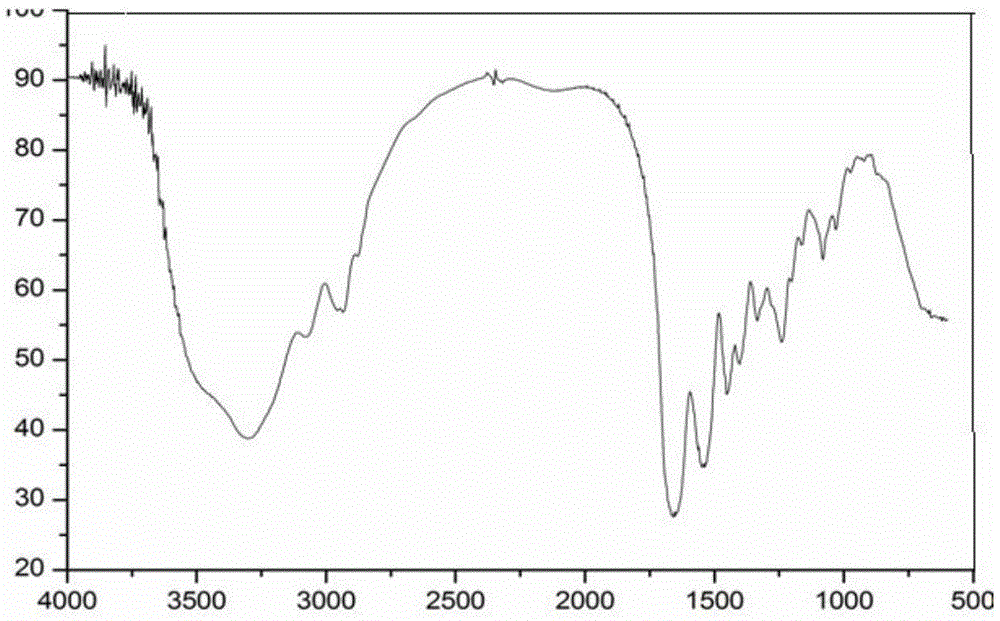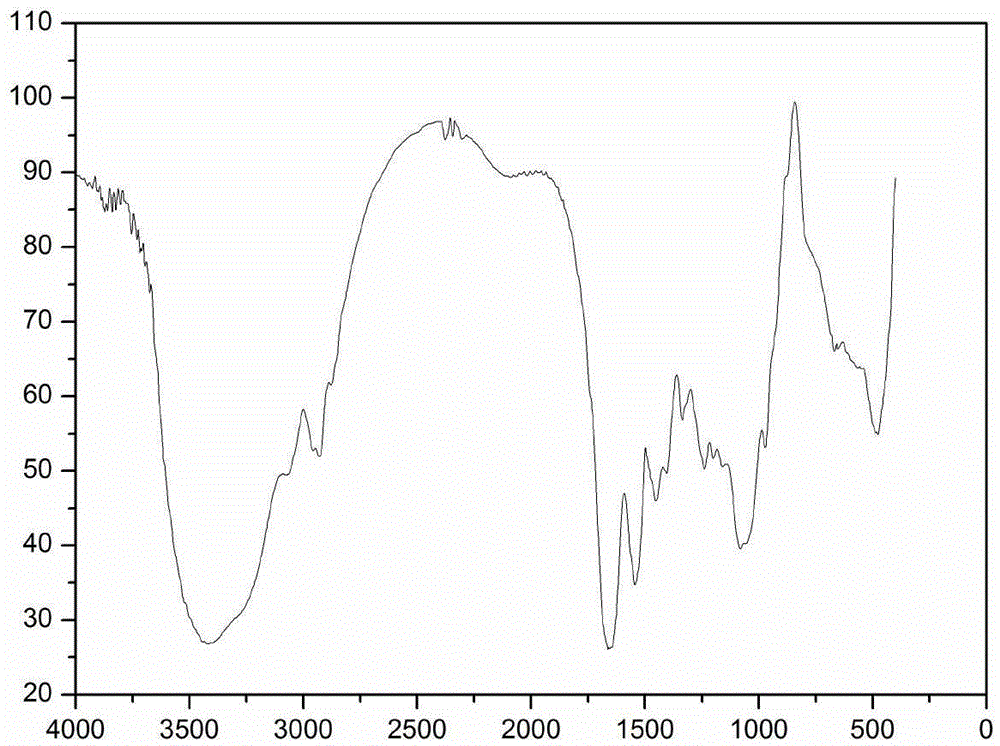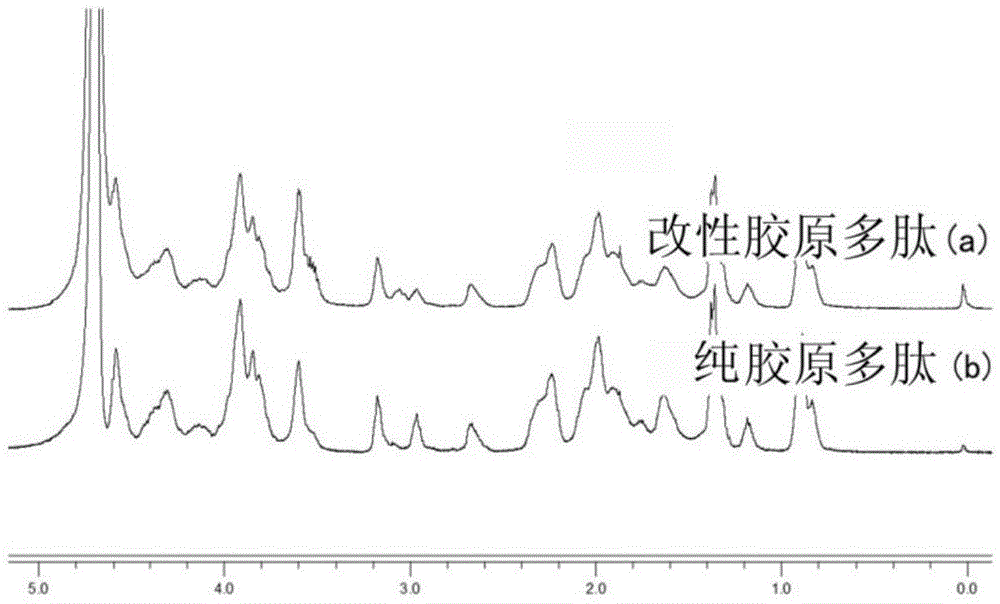Modified gelatin gradient film prepared from mixed glycidol and single-epoxy-terminated polysiloxane
A technology of polysiloxane and glycidol, which is applied in coatings, protein coatings, etc., can solve problems such as poor water resistance and corrosion resistance, strong plastic feeling, affecting film structure, film performance and film application, etc., to achieve weather resistance Excellent performance, low surface tension and superior performance
- Summary
- Abstract
- Description
- Claims
- Application Information
AI Technical Summary
Problems solved by technology
Method used
Image
Examples
Embodiment 1
[0024] Add 0.3g of surfactant and 95g of deionized water into a three-neck reaction flask equipped with a thermometer socket, a sampling port, and a condenser socket, stir and heat to 50°C, and after the surfactant is completely dissolved, add 0.65mL of 2 mol / L sodium hydroxide, adjust the reaction pH to be 10.0, add 5g gelatin (accounting for 5% of the total solution mass), continue to stir until the gelatin is completely dissolved, and then add monoepoxy-terminated polysiloxane (Mw=500) continuously or in batches ), the consumption of single epoxy-terminated polysiloxane is 0.8 times of the primary amino molar weight in the gelatin molecule, the reaction starts, the primary amino content in the reaction system no longer changes in 24 hours, stops stirring and heating, obtains single Epoxy-terminated polysiloxane modified gelatin solution. The monoepoxy-terminated polysiloxane-modified gelatin solution is centrifuged at low temperature, and the white substance in the middle l...
Embodiment 2
[0029] The described method is consistent with that of Example 1, the only difference is that the temperature of the normal pressure oven is changed from 5°C to normal temperature.
[0030] Mix the white product and deionized water evenly at a mass ratio of 1:1, measure 0.5ml of the mixed solution, drop it on the gelatin substrate, and dry it at room temperature to obtain a modified gelatin film. The contact angle test shows that the contact angle of the raw gelatin film is 72 o , the contact angle of the modified gelatin film increased to 81 o , indicating that the hydrophobicity of the modified gelatin film is improved; the differential calorimetry thermal scanner test shows that the Tg of the raw gelatin film is 223 ° C, and the modified gelatin film has two Tgs, which are 115 ° C and 220 ° C, respectively, indicating that the modification The gelatin film has a microphase separation structure; scanning electron microscopy-energy dispersive spectroscopy analysis shows that...
Embodiment 3
[0032] The described method is consistent with Example 1, the only difference is that the temperature of the normal pressure oven is changed to 40°C.
[0033] Mix the white product and deionized water evenly at a mass ratio of 1:1, measure 0.5ml of the mixed solution, drop it on the gelatin substrate, and dry it in an oven at 40°C under normal pressure to obtain a modified gelatin film. The contact angle test shows that the contact angle of the raw gelatin film is 72 o , the contact angle of the modified gelatin film increases to 100 o , indicating that the hydrophobicity of the modified gelatin film is improved; the differential calorimeter thermal scanner test shows that the Tg of the raw gelatin film is 223 ° C, and the modified gelatin film has two Tgs, which are 127 ° C and 224 ° C, respectively, indicating that the modification The gelatin film has a microphase separation structure; scanning electron microscopy-energy dispersive spectroscopy analysis shows that the sili...
PUM
| Property | Measurement | Unit |
|---|---|---|
| glass transition temperature | aaaaa | aaaaa |
Abstract
Description
Claims
Application Information
 Login to View More
Login to View More - R&D
- Intellectual Property
- Life Sciences
- Materials
- Tech Scout
- Unparalleled Data Quality
- Higher Quality Content
- 60% Fewer Hallucinations
Browse by: Latest US Patents, China's latest patents, Technical Efficacy Thesaurus, Application Domain, Technology Topic, Popular Technical Reports.
© 2025 PatSnap. All rights reserved.Legal|Privacy policy|Modern Slavery Act Transparency Statement|Sitemap|About US| Contact US: help@patsnap.com



